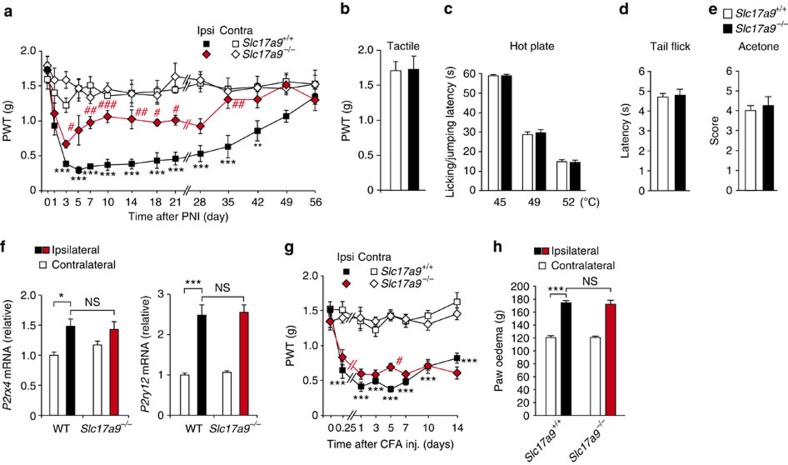Figure 2. VNUT deficiency attenuates PNI-induced pain hypersensitivity without affecting acute pain sensation or inflammatory pain.
(a) Paw withdrawal threshold (PWT) to tactile stimuli of Slc17a9−/− mice and WT littermates (Slc17a9+/+) before and after PNI (n=5; ***P<0.001 versus the contralateral side of Slc17a9+/+ mice; #P<0.05, ##P<0.01, ###P<0.001 versus the ipsilateral side of Slc17a9+/+ mice, two-way ANOVA with post hoc Bonferroni test). (b) PWT of Slc17a9−/− and Slc17a9+/+ mice under normal conditions (n=5). (c) Hot-plate test, where values represent the latencies for animals to lick their hindpaws or jump (n=8). (d) Tail-flick test, where values represent the latencies to flick their tail from the heat source (n=8). (e) Acetone test, where values represent the pain scores after acetone application (n=8). (f) Real-time PCR analysis of mRNAs of P2rx4 and P2ry12 in the spinal cords of WT and Slc17a9−/− mice 7 days after PNI. Values represent the relative ratio of mRNA (normalized to the value for 18S mRNA) to the contralateral side of WT mice (n=6; *P<0.05, ***P<0.001, one-way ANOVA with post hoc Tukey Multiple Comparison test). (g) PWT of Slc17a9−/− and Slc17a9+/+ mice before and after intraplantar CFA injection (n=6; ***P<0.001 versus the contralateral side of Slc17a9+/+ mice; #P<0.05 versus the ipsilateral side of Slc17a9+/+ mice, two-way ANOVA with post hoc Bonferroni test). (h) Paw size, as a measure of edema, in Slc17a9−/− and Slc17a9+/+ mice 7 days after intraplantar CFA injection (n=6; ***P<0.001, one-way ANOVA with post hoc Tukey Multiple Comparison test). Values are means±s.e.m. NS, not significant.

